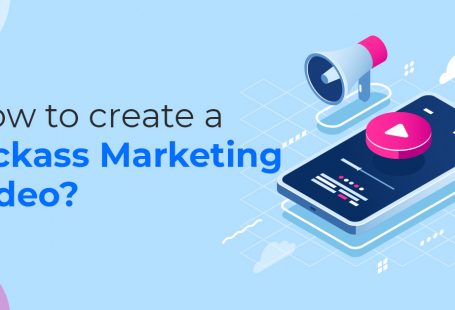When people buy products, they don’t just buy from an e-commerce website. They buy from a brand’s credibility too. So if you own a business, then you need to create a brand and focus on your social media branding, by consistently projecting certain values, through your social media presence.
Social media is an excellent starting point for most businesses to reach their target audience. This is the place where consumers share their opinions about brands and interact with them.
According to Bop Design, around 80% of consumers evaluate solutions from the brands they follow on a social network.
The purpose of this write-up is to help you build a strong brand image on social media.
Here’s the right way to get started.
1. Keep the same social media brand persona across every channel
Often you will find businesses having a presence on every social media channel. That’s fair enough. But what is confusing is to see a business having different descriptions on different accounts.
One would always find it difficult to engage with such a business. Every business needs to have a persona and to create one, you need to be consistent in the way you project yourself. It’s like dividing a long story into beautifully sequenced episodes. You cannot put a random episode in between.
While interacting with brands online, people want consistent experiences. Start with the basics, like your profile picture. Use the same profile picture across your social media accounts. You can use either professional or candid pictures, depending on the nature of your business.
Then comes the content. Unlike your description, you should create different versions of your content for different social media channels (Discussed in point 3). That being said, the tonality of your content should remain the same. Your tone can be funny, witty, personal, conversational, etc.
The idea is to project your brand’s ethos. You should remain authentic to your values, and you can achieve that by being consistent in your communication.
2. See your brand as a human. In one word, “Humanize” it.
If you have a social media handle, then you can’t give the impression that a machine is handling your account. You need to show your human side, and surprise your audience from time to time.
If your audience can sense the “people” behind your business, then rest assured of a long-lasting relationship.
Just think of a scenario where you meet a person for the first time and straightaway he starts bragging about his achievements and throws a sales pitch at your face. 9 out of 10 times, you won’t like it.
Similarly, your audience won’t like it if you keep telling them about your product, but without any emphasis on feedback. Social media is not a one-way street. Through your posts, you shouldn’t just inform but encourage discussions as well. You can explicitly ask for people’s feedback.
You can go live on your YouTube channel and interact with your followers. You can do the same thing on Facebook as well. This is a subtle way of telling people that your brand has a face, and to make your audience feel like a part of a community or an ecosystem.
The most important thing is to reply to your followers. This is the best way to humanize your business. Just reply to each and every follower, irrespective of the nature of their query. Dedicate a person for this if you can. It will go a long way in building long-lasting relationships.
3. Create different versions of your content
The thing is, you simply cannot post the same content on Facebook, Linkedin, or Instagram.
Each of them works in their own way. Although there might be overlapping users, people have a different purpose when they access each of them.
Instagram is more about visual content. So if you copy-paste the same writeup to Instagram’s caption that you shared on Facebook, it won’t get it’s due.
In the case of Facebook and Linkedin, the difference is gradually narrowing down as people are becoming more informal on LinkedIn. But still, the posts on Linkedin carry professional undertones.
People there want to connect professionally only, and they largely share experiences that helped them become a better professional.
Linkedin is being actively used for conversational marketing, where people post short and idea-driven content and try to strike a conversation with their connections. As far as the sponsored content goes, Facebook is still the better option.
So don’t be lazy while creating content. You need to work on multiple versions of your content if you want a good presence on all social media platforms.
As a reference, you can the social media accounts of Gary Vaynerchuk. His Instagram feed is full of visual content, comprising of his quotes and his snaps from various media engagements. This is how you use Instagram as a marketing tool.
On his Twitter account, he does a lot of real-time commentary on events that matter to him. One must say, it’s the perfect content for Twitter.
4. Don’t work without a content calendar
So often we impulsively create a Facebook page, create a welcome post, invite all our friends, and then disappear for a month. If you own a business and want to build a decent social media presence, then such randomness won’t work.
Unfortunately, most of the new businesses follow outdated social media tactics. But if you want to build an audience and keep them engaged at all times, you need to plan your content strategy. So if you don’t want to get lost in this social media wilderness, then you better prepare a content calendar.
It’s not just about posting content frequently but posting a variety of it. So it’s better you prepare an excel sheet and plan your content strategy for the next 3 months so that your entire team comes on the same page.
Posts can be informational or promotional, long-form or short-form, and so on. There are content marketers who prefer sharing a lot of third-party content. So you need to prepare a plan that strikes the perfect balance. You can’t overwhelm or underwhelm your audience with a particular kind of content. You need to find an optimal posting frequency.
Also, if you have a content calendar, then you can easily make those small changes in your strategy, without getting too worked up.
We hope this write-up helps you ace your social media branding. If you have any questions or suggestions, feel free to write them in the comment section.







